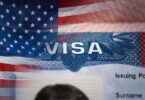If you’ve ever dreamed of living and working amidst stunning environment, unique wildlife, and bustling cities, Australia could be your ideal destination. One way to make this dream a reality is by securing a job with visa sponsorship.
While the process can seem overwhelming, the right guidance can help you navigate it smoothly. Here’s a complete guide to applying for jobs in Australia with visa sponsorship.
What is Visa Sponsorship in Australia?
Before you begin, it’s important to understand what visa sponsorship means. In Australia, employers can sponsor skilled workers through various visa programs, such as the Temporary Skill Shortage (TSS) visa (Subclass 482).
There are also options for permanent residency, including the Employer Nomination Scheme (ENS) visa (Subclass 186) and the Skilled Employer Sponsored Regional (Provisional) visa (Subclass 494).
TSS Visa: This is for temporary workers, allowing them to work in Australia for up to four years, based on the occupation’s skill level.
ENS and SESR Visa: These are pathways to permanent residency, where the employee must be sponsored by their employer for a position that cannot be filled by an Australian resident.
Key Points:
Eligible Occupations: Only positions listed on specific occupation lists can be sponsored.
Employer Requirements: Employers must be approved sponsors and prove they can’t find a suitable Australian worker.
Visa Conditions: These include work restrictions, salary requirements, and sometimes English language proficiency.
Step-by-Step Guide to Securing a Sponsored Job
1. Assess Your Eligibility
Occupation Check: Start by checking if your profession is on the Consolidated Sponsored Occupation List (CSOL). This list dictates which jobs are eligible for sponsorship.
Skills Assessment: Some visas require a skills assessment from a relevant assessing authority to confirm your qualifications meet Australian standards.
2. Research and Identify Potential Employers
Utilize job portals like SEEK and Indeed, where many employers explicitly mention visa sponsorship availability.
Look for companies known to sponsor international talent. Posts on X mention lists of companies willing to sponsor, and you can find similar resources through various websites or migration consultants.
3. Tailor Your Resume and Cover Letter
Customization is Key: Tailor your resume to match the job description, highlighting relevant experience and skills.
Visa Mention: Politely mention your interest in visa sponsorship, but avoid making it the focal point of your application. Employers look for skill fit first.
Format: Use an Australian-style resume format, which is usually concise, focusing on achievements rather than duties. Here’s a guide on how to write one for visa sponsorship.
4. Networking
Engage with Australians or expatriates through platforms like LinkedIn or expat communities online. Networking can lead to job opportunities not advertised publicly.
Attend industry-specific events, webinars, or expos, even virtually, to connect with potential employers.
5. Apply for Jobs
Online Applications: Most applications are made online. Ensure you follow each employer’s application instructions meticulously.
Follow-Up: After applying, a follow-up email can show your enthusiasm and keep you top of mind. But, maintain professionalism and respect the recruitment timeline.
6. Prepare for Interviews
Cultural Fit: Understand Australian workplace culture, which values work-life balance, direct communication, and teamwork.
Interview Questions: Be prepared to discuss your visa situation without making it the central theme of your interview. Focus on how you can contribute to the company.
7. Visa Application Process
Once you secure a job offer, the employer usually initiates the sponsorship process:
Sponsorship Nomination: The employer applies to become an approved sponsor or nominates the position if already approved.
Visa Application: You’ll apply for the visa, which could include submitting health and character checks, along with proof of skills and qualifications.
Costs: Be aware of the financial implications. Visa application fees, health checks, and possibly migration agent fees are part of the process.
8. Stay Updated
Immigration policies can change; keep informed through official channels like the Australian Department of Home Affairs.
Tips for Success
Patience: The process from job application to visa grant can be lengthy. Patience is key.
Migration Agents: Consider hiring a registered migration agent if you find the process overwhelming. They can navigate complex visa requirements.
Community Support: Join forums or groups where others are going through similar experiences.
Common Pitfalls to Avoid
Over-reliance on Sponsorship: Don’t center your application around the visa; focus on your qualifications and fit for the job.
Ignoring Local Competition: Even with sponsorship, you’re competing with Australians and other international candidates.
Misinformation: Always verify information through official sources or reputable agencies rather than relying solely on social media or hearsay.
Conclusion
Applying for a job with visa sponsorship in Australia is a journey filled with opportunities and challenges. By understanding the process, preparing thoroughly, and engaging with the right resources, you can move closer to working in this beautiful country. Remember, each step from assessing your eligibility to finally receiving your visa requires diligence, patience, and sometimes a bit of creativity in how you present yourself as the ideal candidate






